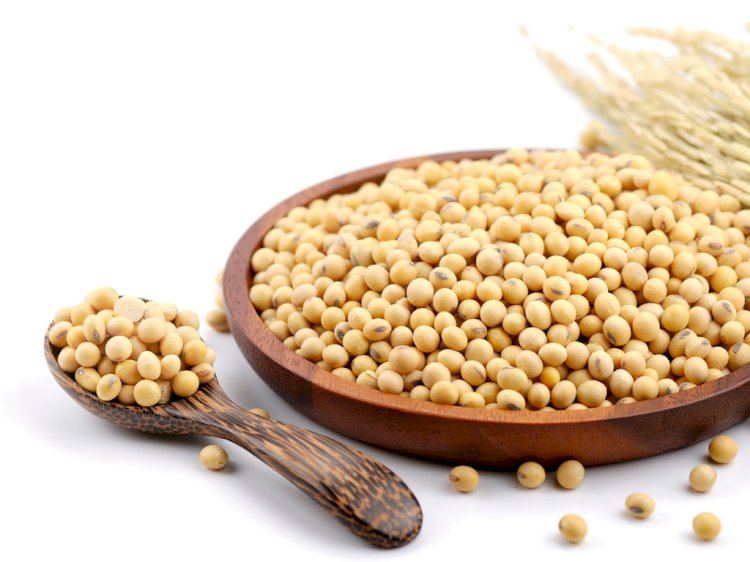Global Soy Protein Market to Grow at a CAGR of 7.4% during 2023-2028
A recent study conducted by the strategic consulting and market research firm, BlueWeave Consulting, revealed that the Global Soy Protein Market was worth USD 10.94 Billion in the year 2022. It is estimated to grow at a CAGR of 7.4%, earning revenue of around USD 14.23 Billion by the end of 2028.

A recent study conducted by the strategic consulting and market research firm, BlueWeave Consulting, revealed that the Global Soy Protein Market was worth USD 10.94 Billion in the year 2022. It is estimated to grow at a CAGR of 7.4%, earning revenue of around USD 14.23 Billion by the end of 2028. The lucrative growth of the Global Soy Protein market is attributed to urbanization, the rising purchasing power of the consumer, expanding Food and Beverage industry, adoption of increasing consumption of Soy Protein snacks, and fast food, and protein supplements across the globe. Furthermore, Global Soy Protein Market is one of the most emerging markets that grow continuously owing to its advantages such as high protein content, cholesterol-free, lactose-free protein, and gluten-free. The demand for soy protein is also on the rise because of its growing application in Food and Beverages industry as a functional and nutritional ingredient, pharmaceuticals, cosmetics, and as the best alternative to animal protein. However, to some consumers, the bad smell of soybeans and their unpleasant flavor is undesirable for consumption of Soy Protein food due to its beany and grassy taste, which is the main restraining factor of the Global Soy Protein Market.
Some countries developed cultivating genetically modified crops that are scientifically harmful to health and the environment thereby affecting the Global Soy Protein Market. Soy Protein has many benefits in personal care and it is used in cosmetics usually as genistein, and soy isoflavone brightens the skin, boosts collagen production, decreases redness, and improves skin tone. Soy protein concentrates are beneficial for pregnant and lactating women, for children, and are widely used in pet food, and as a milk replacement for babies. Soy flour is a powder form of soybeans that contains natural oils, and it is gluten-free and used to prepare yeast-raised bread. Soy Protein is a complete protein and provides all essential amino acids for human health. In western countries, soy-based Protein bars, snacks, fast food, confectionery, dairy replacers, bakery, gluten-free, functional beverages, nutritional supplements, and pet foods, in general, are gaining huge popularity among consumers. Soy-Protein as an alternative to meat and dairy products that has the same benefits as animal protein has already carved a niche for itself in the Global Soy Protein Market due to its high protein and amino acid content. With increasing launches of different other soy protein Food, the Global Soy Protein Market is anticipated to propel during the forecast period (2023-2028).
Request for Sample Report @ https://www.blueweaveconsulting.com/report/soy-protein-market/report-sample
Based on Distributional Channel, the Global Soy Protein Market is segmented into Online Retail, Convenience Stores, Supermarkets/Hypermarkets, and others. The Online Retail segment accounts for the largest market share as the demand for Soy Protein increased enormously by the vegetarian people. Also, due to rising mobile usage, advertisements, and the rapidly growing E-Commerce business, emerging sales of soy protein bars, gym protein supplements, plant-based food and confectionary products as well as a variety of soy protein food products are available on Online websites. Consequently, accelerating the growth of the Global Soy Protein Market during the forecast period . Based on End-User, the Global Soy Protein Market is segmented into Food and Beverages, Animal Feed, Cosmetics, and Protein Supplements. The Food and Beverages segment dominates the Global Soy Protein Market owing to the increasing need for protein in Food and Beverages, also rising consumption of alternative protein to animal protein leads to force manufacturers use soy protein as an alternative to meet the protein demand. This is followed by new products launches by manufacturers such as soy milk, soy flour, soy nuggets, soy nuts, soy snacks, and other soy-based protein products.
Geographically, the Global Soy Protein Market is segmented into North America, Europe, Asia-Pacific (APAC), Latin America (LATAM), Middle East & Africa (MEA). The North America segment accounts to hold the largest share in the market owing to the rising health consciousness, increasing demand for a vegan diet, and increasing rate of working women outside the house leading to increase sales of ready-to-eat and packaged soy protein food products Also, the increasing research and development activities in this region are driving the Global Soy Protein Market growth during the forecast period. The sudden outbreak of COVID-19 adversely affected the growth of the Global Soy Protein Market. Initially, the sales declined due to which many productions halted during the complete lockdown, disruption in supply chains, and shortage of raw materials is the main reason which declines the growth of the Global Soy Protein Market. However, post-COVID-19, there is a surge in demand for soy protein-based Products because the health consciousness and well-being caused by the pandemic are expected to drive the growth of the Global Soy Protein Market in the future.
The leading market players in the Global Soy Protein market are Archer-Daniels-Midland, Cargill, Inc., Wilmar International Limited (Singapore), Ruchi Soya Industries Ltd (India), Nisshin Oillio Group, Ltd. (Japan), The Scoular Company (US), AG Processing Inc (US), Devansoy Inc. (US), E.I. Du Pont De Nemours, Company (US), CHS Inc. (US), Kerry Group plc (Ireland), Kellogg Company, Kraft Heinz Company, and other prominent players. The Global Soy Protein Market is highly consolidated with the presence of multinational Food and Beverages companies. These companies constantly launch a wide range of products with innovations to attract consumers and significantly invest in research and development activities to further innovate their offerings. Furthermore, the adoption of competitive strategies such as partnerships, mergers, acquisitions, collaborations, etc., is also prominent in this market.
Contact Us:
BlueWeave Research Blog
Phone No: +1 866 658 6826
Email: info@blueweaveconsulting.com


























